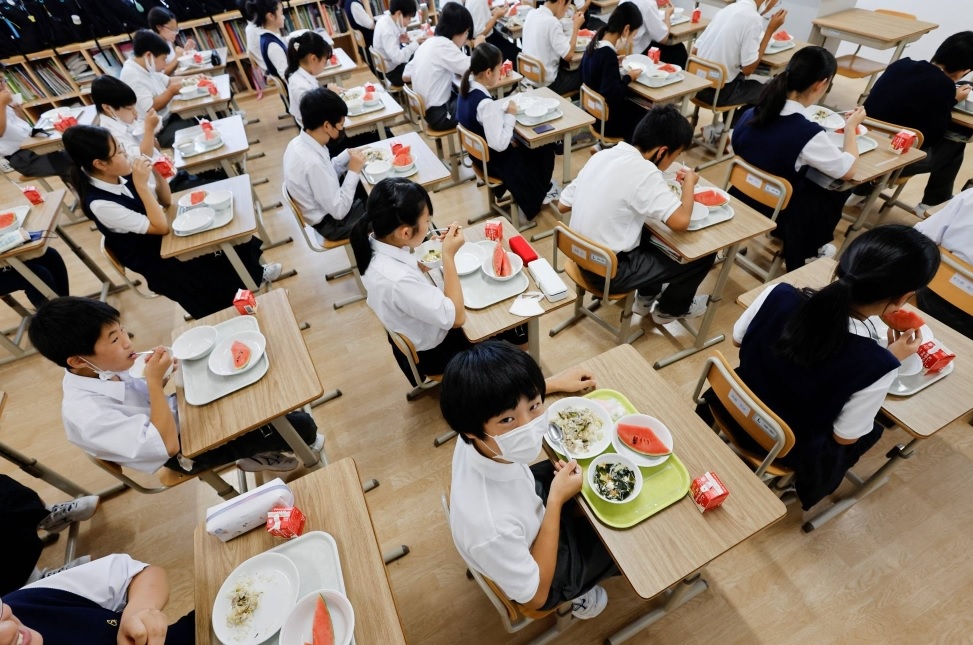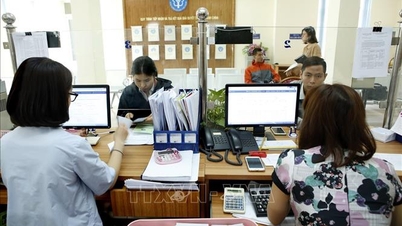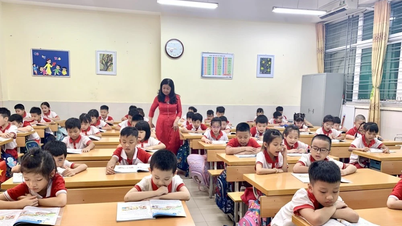The Mainichi Shimbun newspaper on June 19 quoted a 13-year-old student of a class at a junior high school (Okegawa City, Saitama Prefecture) as saying that since the new school year started in April 2023, in addition to a printed list of school rules, the homeroom teacher announced a number of separate rules for the class that the students themselves had created.
"It's like everyone in the class is spying on each other"
A student shared: "If I forget to bring necessary items to class many times, I will not be allowed to eat extra food (after the main meal) during lunch break and will not be allowed to leave the classroom during the break between classes."
The student added that if he violated class rules, the monitor would report it to the homeroom teacher. On some school days, because he violated his own class rules, this student did not dare to go to the bathroom during recess between classes.
“I feel pressured, like everyone in class is watching each other,” the student told his 48-year-old mother.

Students eat lunch in a classroom in Japan.
"For a poor family, the supplementary lunch meal helps to increase the nutrition of students. And some students need to go to the toilet due to health problems. Classroom rules like this can hinder the physical and mental development of students and violate children's rights," the mother said.
By the new school year (starting in April 2024), both of the above classroom rules have been abolished. In an interview with the Mainichi Shimbun , the school's vice principal said that many students often forget things and the class thought that classroom rules would help solve this problem. However, this rule is inappropriate when it forces students to not take breaks between classes or go to the bathroom.
Other classroom rules mentioned above remain the same, but the group leader must check and point out areas that students have not cleaned properly.
The principal does not fully understand the classroom rules.
The vice principal said that the school board had meetings to discuss with homeroom teachers about specific rules for the classroom.
However, according to the Mainichi Shimbun , the school board did not fully grasp some of the class rules, such as "the drawstrings on students' gym pants must be the same color." The male student said: "The whole class was in chaos when a student changed the color of the drawstring."
According to the school's Vice Principal, the goal of letting students create their own classroom rules is to increase their sense of community and develop problem-solving skills. The Vice Principal admitted: "Some of the students' ideas are excellent, but there are also inappropriate classroom rules. Homeroom teachers will review the classroom rules more closely."
Professor Ryo Uchida of Nagoya University said that children can propose unreasonable rules and schools and homeroom teachers should reject inappropriate proposals from the beginning.
Previously, Japanese media reported on unreasonable school rules that attracted public attention.
In 2022, nearly 200 Japanese schools announced the cancellation of controversial rules on hair color and underwear for students. Afterwards, the Japanese Ministry of Education noted that schools need to have consensus from parents and students when issuing rules. In addition, schools must accept feedback and suggestions from parents and students to promptly adjust or supplement the rules.
Source: https://thanhnien.vn/nhat-ban-tranh-cai-viec-hoc-sinh-tu-dua-ra-noi-quy-lop-185240619163318258.htm





![[Photo] Prime Minister Pham Minh Chinh chairs a meeting of the Government Standing Committee on overcoming the consequences of natural disasters after storm No. 11](https://vphoto.vietnam.vn/thumb/1200x675/vietnam/resource/IMAGE/2025/10/09/1759997894015_dsc-0591-jpg.webp)
![[Photo] Prime Minister Pham Minh Chinh chairs the Conference to deploy the National Target Program on Drug Prevention and Control until 2030](https://vphoto.vietnam.vn/thumb/1200x675/vietnam/resource/IMAGE/2025/10/09/1759990393779_dsc-0495-jpg.webp)

































































































Comment (0)